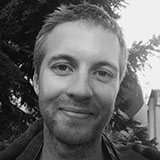A few geographical facts: the Northern Territory in Australia is 1.36 million km2. This equates to 5½ times the area of the UK. It contains a population of just 230,000 people of which 130,000 live in Darwin and the surrounding area. It is a vast area with very spread out communities and a stretched infrastructure.
1930s—Katherine Airfield
Clyde Fenton is the founder of retrieval medicine in the Northern Territory (NT). A wild and confident young man graduating from Melbourne University Medical School in 1925, he taught himself to fly on a self-built aircraft. His adventures brought him to Darwin in 1928, where he met the NT chief medical officer, CEA Cook, who took a shine to him. A short interlude with the RAF in the UK followed this and left him with the necessary aviation experience and qualifications. He then journeyed back to Australia in 1933 to look for flying medical jobs. The Queensland and Victoria based Royal Flying Doctor Service (RFDS), founded by Reverend John Flynn in 1928, used a separate pilot/doctor team, which did not appeal to Fenton’s love for flying. After renewed contact with Cook he was appointed as medical officer for the town of Katherine in 1934.
From its small airfield, he flew a Gypsy Moth Biplane to regional communities. He did this with no onboard radio, no navigation equipment (except a map and compass), normally on his own, through the day and night. He apparently navigated night flights to unkempt airstrips lit by kerosene flares and car headlights and then flew back to Katherine using only the shine of the railway lines and the curving river to direct the way. After several crashes, the government funded a larger plane, which allowed the transportation of more equipment, a nurse, if necessary and the ability to carry stretchered patients. Fenton took it on himself to respond in earnest to whatever was laid before him.
2015—Darwin International Airport
Today I am sitting in an air conditioned office attached to a modern hangar on the edge of Darwin airfield. The hangar contains three planes, one helicopter, a garrison of engineers, a gaggle of pilots, and secured storage bays for medical equipment.
Pre-hospital medicine, an evolving art form, has progressed far from its origins. Small steps in the wider medical world have been adapted and incorporated into the aviation domain; better quality equipment, evidence based practices, improved understanding of aviation physiology, and expansive military medical studies into pre-hospital trauma, have all played their part. Crucially, there have been huge advances in aviation engineering and engine efficiency, allowing planes to travel further on less fuel.
A fond memory…
Clyde Fenton is remembered as having a “resolute devotion to duty” and “willful disregard for personal hazard” and continues to hold a high standing with the people of the NT. From these foundations, the Northern Territory Aeromedical Retrieval Service came to exist and, via a hodgepodge historical line, leads to this modern hangar and the present-day team that inhabit it. The personal risks he took enabled healthcare to reach even the most remote communities in the NT and provide a spotlight for the rest of Australia to see the territories distinctive challenges. I wonder what he would think of the legacy he has left behind?
Toby Shipway is working as a retrieval registrar for Careflight based out of Darwin. He has taken a brief interlude from his anaesthetic training in the NHS to experience diverse pathology, a markedly different medical system and some fantastic scenery along Australia’s Top End.
Competing interests: None declared.

